Discover the sweet benefits of wildflower honey. Learn about its unique flavors, health benefits, how it’s made, and ways to use it in your kitchen. Perfect for honey lovers and beginners alike.
What is Wildflower Honey?
Wildflower honey is a special type of honey made from the nectar of many different flowers. The flowers grow wild, which means they are not planted by farmers. This honey has a unique taste because the bees collect nectar from many kinds of flowers. The flavor of wildflower honey can change depending on where the bees live and what flowers are nearby. Some people say wildflower honey tastes sweeter, while others say it has a more complex flavor. It is also called “multifloral” honey because it comes from many flowers. Wildflower honey is natural and has no added chemicals. It is one of the most popular types of honey around the world.
How Wildflower Honey is Made?
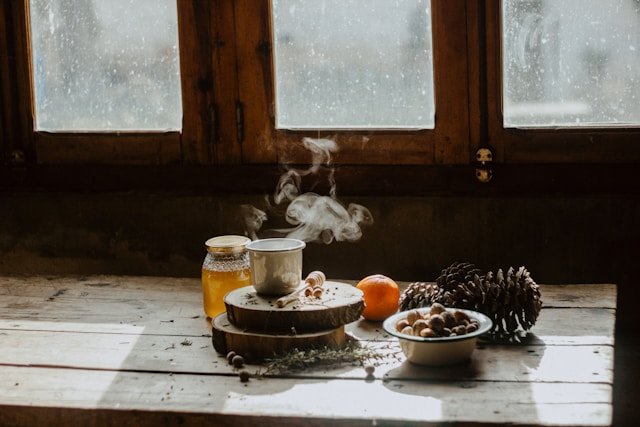
Wildflower honey is a natural product made by honeybees from the nectar of various wildflowers. The process of making wildflower honey involves several stages, from bees collecting nectar to the final harvesting by beekeepers. Here’s a step-by-step breakdown of how wildflower honey is made:
Step | Description |
Bees Collect Nectar | Honeybees visit wildflowers to gather nectar. They use their long tongues to suck up the sweet liquid from the flowers. Each bee can visit up to 1,500 flowers in one day. The bees store the nectar in a special body part called the honey stomach. During this journey, bees also pollinate the flowers. |
Enzymes Added by Bees | While the nectar is inside the honeybee’s honey stomach, it mixes with enzymes. These enzymes help break down the sugars in the nectar into simpler sugars like glucose and fructose. This chemical change is important because it makes the nectar more suitable for honey production |
Returning to the Hive | After collecting nectar, the bees come back to their hive. The bees pass the nectar from one bee to another inside the hive. Each bee continues to add more enzymes to the nectar. This further breaks down the complex sugars into simple ones. It also reduces the water content in the nectar. |
Storing in Honeycombs | Once the nectar has been processed, the bees store it in wax cells called honeycombs. The honeycombs are made by the worker bees from the wax they produce. The cells are hexagon-shaped and are perfect for storing honey. |
Dehydration Process | The nectar still contains too much water to become honey. Bees solve this problem by fanning their wings rapidly to create airflow inside the hive. This airflow helps evaporate the water from the nectar, making it thicker and turning it into honey. |
Sealing the Honey | Once the honey has reached the right thickness, the bees seal the honeycomb cells with a thin layer of wax. This process is called “capping.” The wax cap keeps the honey fresh and prevents moisture from entering the cells. |
Honey Harvesting | Beekeepers carefully remove the honeycombs from the hive. They use special tools to extract the honey without harming the bees. The honey is then filtered to remove any impurities like small pieces of wax or bee parts. Finally, the honey is packed and sold. |
Health Benefits of Wildflower Honey
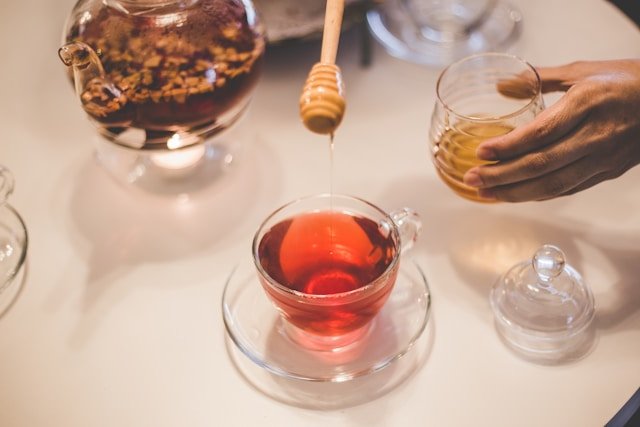
Wildflower honey is not just a tasty treat; it also offers a range of health benefits. This natural sweetener is rich in nutrients and antioxidants. It has compounds that can boost health and well-being. Let’s explore the various health benefits of wildflower honey in more detail.
Natural Sweetener
Wildflower honey is a natural alternative to refined sugar. It contains a mix of glucose and fructose, which are simple sugars that your body can easily absorb. Wildflower honey has vitamins, minerals, and antioxidants, unlike processed sugar. So, it’s a healthier choice for sweetening foods and drinks.
According to Harvard Medical School, honey does not cause a spike in blood sugar levels as rapidly. This makes it a better option for people trying to manage their blood sugar levels.
Rich in Antioxidants
Wildflower honey is packed with antioxidants, including flavonoids and phenolic acids. Antioxidants help fight free radicals. These harmful molecules can damage cells, causing aging and cancer.
A study in the Journal of Agricultural and Food Chemistry found that wildflower honey has a high level of antioxidants. These antioxidants help the body from oxidative stress. It is linked to different types of chronic diseases.
Soothes Sore Throats
One of the most well-known benefits of wildflower honey is its ability to soothe sore throats. Its thick, sticky texture coats the throat. It forms a barrier that can reduce irritation and coughing. Honey also has mild antibacterial properties that can help fight infections.
The Mayo Clinic says to use honey for sore throats and coughs. It’s a natural remedy. They note that honey can work as well as some OTC medicines in relieving symptoms, especially in children.
Boosts Energy
Wildflower honey is a natural source of carbs. They are the body’s main energy source. Honey can give a quick energy boost. It’s great for athletes or anyone needing a pick-me-up.
A study in the Journal of the International Society of Sports Nutrition found that honey has a good energy source for athletes. The study suggests that honey can work as well as sports gels. It can provide a sustained energy boost during long exercise.
Supports Digestion
Wildflower honey contains natural enzymes that aid in digestion. These enzymes help digest food in the stomach, making it easier for the body to absorb nutrients. Honey can promote the growth of good gut bacteria. It has prebiotic properties.
A review in the Journal of Food Science and Technology says honey has amylase and invertase types of enzymes. It helps digest starches and sugars. The prebiotic effect of honey can improve gut health. It does this by increasing good bacteria, like Bifidobacteria.
Allergy Relief
Some people believe that consuming local wildflower honey can help decrease seasonal allergies. The theory is that local honey has small amounts of local pollen. It may help the body build a tolerance to allergens over time.
A study in the Annals of Saudi Medicine suggested that honey might help with allergies. There is, however, some scientific evidence to support this. Honey consumers had fewer allergy symptoms than non-consumers. Some more research is needed to confirm these effects.
Promotes Wound Healing
Wildflower honey can treat minor cuts, burns, and wounds. It has natural antibacterial and anti-inflammatory properties. Applying honey to a wound can help prevent infection and faster healing.
The NIH recognizes honey’s role in wound care. Honey can reduce inflammation, kill bacteria, and speed up healing. It works when applied to wounds. Studies have shown this.
Different Types of Wildflower Honey
Wildflower honey has many types. Each has a unique flavor, color, and trait. The differences arise from the specific wildflowers that bees visit when collecting nectar. We’ll explore wildflower honey. It varies by region, season, and floral sources.
Light Wildflower Honey
Light wildflower honey is typically harvested in the spring and early summer. This honey’s nectar comes from early-blooming, light-colored flowers. It has a delicate, floral aroma. The honey itself is usually pale yellow or golden and has a mild, sweet flavor.
- Characteristics: Light in color, mild flavor, and floral undertones.
- Best Uses: Great for drizzling on yogurt, adding to tea, or as a natural sweetener in light dishes.
- The American Honey Producers Association says wildflower honey is higher in fructose. It has a subtler flavor. They are great for cooking.
Dark Wildflower Honey
Dark wildflower honey is harvested later in the summer or early fall. This honey’s nectar comes from late-blooming wildflowers. They often have more intense flavors. This honey is darker, from amber to deep brown. It has a richer, more robust taste than its lighter counterpart.
- Characteristics: Dark in color, rich and robust flavor, earthy and bold notes.
- Best Uses: Great for baking, strong cheeses, and marinades for meats.
- The National Honey Board says wildflower honey has more minerals and antioxidants. This gives it a deeper flavor and health benefits.
Mountain Wildflower Honey
Mountain wildflower honey is made from the nectar of flowers that grow at higher altitudes. These wildflowers are often more resilient. They have unique flavors due to the harsher growing conditions in mountainous regions. The honey from these flowers can vary widely in flavor and color. But, it is known for its rich, complex taste.
- Characteristics: It varies in color. It has a rich, complex flavor with notes of herbs and wild herbs.
- Best Uses: Great for gourmet dishes, artisan breads, and herbal teas.
- A study in the International Journal of Food Properties says that honey from the mountains often has a more complex flavor. This is due to the diverse plants and unique conditions there.
Forest Wildflower Honey
Forest wildflower honey comes from the nectar of wildflowers in forests. This type of honey often has a deep, woody flavor. It has hints of resin or pine. These reflect the natural surroundings where the bees forage. The color can range from amber to dark brown, and the taste is typically robust and slightly smoky.
- Characteristics: Dark amber to brown color, woody and smoky flavor, hints of resin or pine.
- Best Uses: Ideal for pairing with dark chocolates, using in savory dishes, or as a bold sweetener in coffee.
- A study in the Journal of Apicultural Research found that forest honey often has unique compounds. They give it a distinct flavor and antioxidants.
Organic Wildflower Honey
Organic wildflower honey is made by bees. They forage in areas free from pesticides and other chemicals. The honey is certified organic. It means the bees and the wildflowers they visit are organic. This honey is often lighter in color and has a clean, pure taste.
- Characteristics: Light to medium color, pure and clean flavor, free from chemical residues.
- Best Uses: Ideal for natural skincare, organic recipes, or as a sweetener.
- The USDA National Organic Program sets strict rules for organic honey. They ensure it is free from synthetic additives and produced sustainably.
Meadow Wildflower Honey
Meadow wildflower honey comes from bees. They collect nectar from wildflowers in meadows. These areas often have many flowers. This results in honey with a complex, diverse flavor. The honey is usually light to medium in color and has a sweet, floral taste.
- Characteristics: Light to medium color, diverse and complex flavor, sweet and floral notes.
- Best Uses: Great for salad dressings, spreading on toast, or using in desserts.
- The Honey and Pollination Center at UC Davis says meadow honey shows the meadows’ wildflower diversity. This gives it a complex flavor that can vary from year to year.
Wildflower Honey vs. Other Honey Types
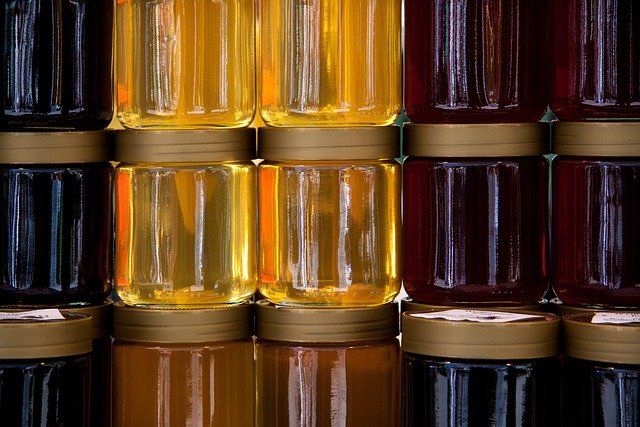
Honey comes in different types, each with its own unique flavor, color, and health benefits. Wildflower honey is just one type among many, and it stands out for its diverse floral sources. Comparing wildflower honey to clover, manuka, and acacia honey will show their unique qualities. Below is a detailed comparison of wildflower honey and other honey types, presented in a table format for easy reference.
Feature | Wildflower Honey | Clover Honey | Manuka Honey | Acacia Honey |
Source | Nectar from a variety of wildflowers | Nectar from clover flowers | Nectar from the Manuka tree (Leptospermum scoparium) | Nectar from the black locust tree (Robinia pseudoacacia) |
Color | Varies from light golden to dark amber | Light golden to amber | Darker, often with a reddish hue | Very light, often pale yellow or almost transparent |
Flavor Profile | Complex, with floral and earthy notes | Mild, sweet, and delicate | Strong, medicinal, slightly bitter | Very mild, delicate, with hints of vanilla |
Consistency | Thick, may crystallize over time | Smooth, crystallizes quickly | Thick and viscous, crystallizes slowly | Very smooth, often remains liquid longer |
Antibacterial Properties | Mild antibacterial properties | Low to moderate antibacterial properties | High antibacterial activity, thanks to methylglyoxal (MGO) | Mild antibacterial properties |
Antioxidant Content | High, especially in darker varieties | Moderate, lower than wildflower and manuka honey | Very high, due to the presence of unique phenolic compounds | Moderate, generally lower than wildflower honey |
Common Uses | General sweeteners, baking, tea, health remedies | Sweetener for tea, baking, and everyday use | Medicinal use, wound care, immune support | Sweetener for beverages, desserts, light-flavored dishes |
Nutritional Value | Rich in vitamins, minerals, and enzymes | Lower in nutrients compared to wildflower and manuka honey | High in minerals, vitamins, and amino acids | Lower in minerals and vitamins, high in fructose |
Price Range | Moderate, depending on the floral source | Generally Affordable | Expensive, due to its medicinal properties | Moderate, slightly higher than clover honey |
Harvesting Region | Various regions depends on the local wildflowers | Widely produced in the USA, Canada, and Europe | Primarily New Zealand and Australia | Mainly Europe, especially Hungary and Romania |
Health Benefits | Supports digestion, boosts immunity, antioxidant-rich | General health benefits, mild antibacterial effects | Strong antibacterial, antiviral, and anti-inflammatory effects | Gentle on digestion, supports skin health, low glycemic index |
How to Store Wildflower Honey
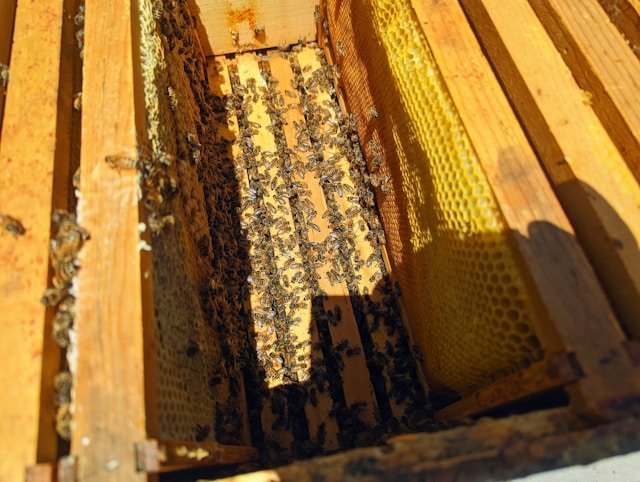
Properly storing wildflower honey is key. It keeps its quality, flavor, and health benefits. Honey is a natural product. If stored correctly, it can last for years. But, improper storage can cause crystallization, loss of flavor, or spoilage. Here’s a guide on how to store wildflower honey to keep it fresh and delicious for as long as possible.
Use the Right Container
- Use Glass or Food-Grade Plastic: Store honey in an airtight container to keep out air and moisture. Glass jars are ideal because they don’t react with honey and are impermeable to air. Food-grade plastic containers are a good option for storing large amounts of honey.
- Avoid Metal Containers: Do not store honey in metal containers. The acids in honey can react with metal, causing corrosion and spoilage.
Store at Room Temperature
- Optimal Temperature: Honey is best stored at room temperature, around 70°F (21°C). At this temperature, honey will remain smooth and easy to pour or spread. Don’t store honey in places with high-temperature changes, like near a stove or window.
- Avoid Refrigeration: It can cause honey to crystallize faster. While crystallized honey is still safe to eat, it can become difficult to use. If your honey does crystallize, you can gently warm it to return it to its liquid state.
Keep Away from Direct Sunlight
- Dark Storage Area: Sunlight can make honey lose its flavor and nutrients over time. It’s best to store honey in a dark place, such as a pantry or cupboard, where it won’t be exposed to light.
- Opaque Containers: If you’re worried about light, use a dark, opaque container to store your honey in bright areas.
Keep the Lid Tightly Sealed
- Prevent Moisture Absorption: Honey is hygroscopic. It can absorb moisture from the air. A loose lid can let in moisture. This may cause fermentation or spoilage. Always make sure the lid is securely fastened after each use.
- Reduce Air Exposure: A tight lid minimizes air exposure. This helps preserve flavor and prevent crystallization.
Avoid Contaminating the Honey
- Use Clean Utensils: Always use a clean, dry spoon or honey dipper when scooping honey from the jar. Introducing water or food particles can lead to fermentation and spoilage. Even small amounts of contaminants can affect the quality and shelf life of the honey.
- Avoid Double Dipping: If you use honey in recipes or as a spread, don’t dip a utensil back into the honey jar after it has touched other foods.
Handling Crystallized Honey
- Crystallization Is Normal: It’s a natural process. The glucose in honey forms crystals, giving it a gritty texture. This process doesn’t mean the honey has gone bad—it’s still perfectly safe to eat.
- Reversing Crystallization: To return crystallized honey to liquid, warm it. Place the jar in a water bath (max 100°F or 38°C). Stir until the crystals dissolve. Avoid using a microwave, as it can overheat the honey and destroy its beneficial enzymes and nutrients.
Long-Term Storage Tips
- Check for Spoilage: Honey lasts a long time. But, check for spoilage signs, like an off smell, foaming, or a color change. Spoiled honey should be discarded.
- Store Bulk Honey Separately: If you buy honey in bulk, transfer some to a separate jar for regular use. This reduces the time the bulk honey is exposed to air and contaminants.
Buying and Choosing the Best Wildflower Honey
Wildflower honey is a popular natural sweetener. It has a diverse flavor and many health benefits. However, with so many options available, choosing the best wildflower honey can be a bit overwhelming. Here’s a guide to help you make an informed decision when buying wildflower honey.
Understand the Source and Floral Variety
- What Is Wildflower Honey? Wildflower honey is from bees that collect nectar from various wildflowers. The flower mix can vary by region and season. This results in honey with unique flavors and colors. This variety is a main draw of wildflower honey. But, it means no two batches are exactly alike.
- Floral Sources: Consider where the honey comes from. Regional differences in flowers affect honey’s taste, color, and nutrients. For example, wildflower honey from the mountains may taste different from honey from a meadow or forest.
Check the Label for Authenticity
- 100% Pure Honey: When buying wildflower honey, look for labels that state “100% pure honey.” This ensures that the product is not mixed with sugar, corn syrup, or other additives. Some cheap honey products may be diluted or mixed with other sweeteners. This reduces their nutrition and alters their taste.
- Raw vs. Processed Honey: Raw honey is honey that has not been heated or pasteurized. It retains more of its natural enzymes, antioxidants, and nutrients. Processed honey is often heated and filtered. This can remove some of its beneficial components. If you’re looking for the most nutritious option, choose raw wildflower honey.
- Organic Certification: Organic wildflower honey comes from nectar. It is collected in areas without pesticides or chemical fertilizers. Certified organic honey ensures the bees and the land are organic. This is a good choice if you want honey that’s free from synthetic chemicals.
Consider the Color and Flavor
- Color Range: Wildflower honey can range in color from light yellow to dark amber. Generally, lighter honey has a milder flavor, while darker honey has a richer, more robust taste. Your choice of color may depend on how you use the honey. Lighter honey is great for tea and drizzling on foods. Darker honey is better for baking or pairing with strong flavors.
- Flavor Profile: Wildflower honey’s flavor can vary widely. It depends on the flowers the bees visit. Some wildflower honeys have a floral and fruity taste, while others might be more earthy or spicy. If possible, taste the honey before buying or look for tasting notes on the label.
Buy from Trusted Sources
- Local Beekeepers: Buying honey from local beekeepers is a great way to get a quality product. Some believe that local honey can help with seasonal allergies. It often contains local pollen. Plus, supporting local beekeepers promotes sustainable practices and helps maintain bee populations.
- Reputable Brands: If you buy honey, choose reputable brands with a history of quality. Check for reviews or ask for recommendations to find the best brands.
- Farmers’ Markets: Farmers’ markets are another excellent place to buy wildflower honey. Vendors at these markets often sell honey. It is raw, unprocessed, and from local bees. You can often sample the honey before buying, which helps you find the flavor you prefer.
Be Aware of Common Adulteration Issues
- Adulteration: Unfortunately, honey is one of the most commonly adulterated foods. Some products labeled as honey may be mixed with other sweeteners, like corn or rice syrup. To avoid adulterated honey, look for certified products. Trusted groups, like True Source Honey, verify the honey’s origin and purity.
- Avoid Ultra-Filtration: Some honey is ultra-filtered to remove pollen and other particles. While this makes the honey clear and smooth, it also removes beneficial compounds. Pollen is often used to trace the origin of honey, so ultra-filtration can hide the true source. Raw, minimally processed honey is usually a better choice.
Consider the Price
- Price and Quality: Wildflower honey varies in price. It depends on its source, purity, and processing. Generally, higher-quality honey, such as raw or organic honey, will cost more. However, it’s often worth paying a bit extra for a product that is pure, nutrient-rich, and free from additives.
- Bulk Buying: If you use a lot of honey, consider buying in bulk. Bulk honey is often less expensive per ounce, and you can store it for a long time if kept properly. Just make sure that the bulk honey is of high quality and from a trusted source.
Check the Packaging
- Glass vs. Plastic: Honey is commonly packaged in glass or plastic containers. Many prefer glass. It doesn’t interact with the honey, is easy to clean, and is eco-friendly. However, food-grade plastic is also a good option and is more lightweight and less likely to break.
- Airtight Seals: Buy honey in an airtight container. This keeps out moisture, which can spoil it. Look for jars with tight-fitting lids and check the seal before purchasing.
Specialty Wildflower Honey
- Single-Region Honey: Some wildflower honey are labeled by their region. Examples are “Appalachian Wildflower Honey” and “Rocky Mountain Wildflower Honey.” They have unique flavors from the local flora. So, they make special additions to your pantry.
- Monofloral Wildflower Honey: Sometimes, honey may mostly come from one wildflower. But, it may also include nectar from other flowers. This honey has a more distinct flavor. It is complex, with multiple floral sources.
Final Discussion
In conclusion, wildflower honey is a natural, versatile sweetener. It has many flavors, health benefits, and types. Bees visit diverse wildflowers, giving each batch a unique taste. Wildflower honey has many benefits. It can be a natural remedy, a tasty meal addition, or a healthier alternative to processed sugars. This honey is delicious. It has health benefits, too. It soothes sore throats and has antioxidants. When buying wildflower honey, consider its source and authenticity. Also, check proper storage. This will ensure the best quality. Wildflower honey, whether light or dark, is popular. It’s a tasty, natural sweetener.

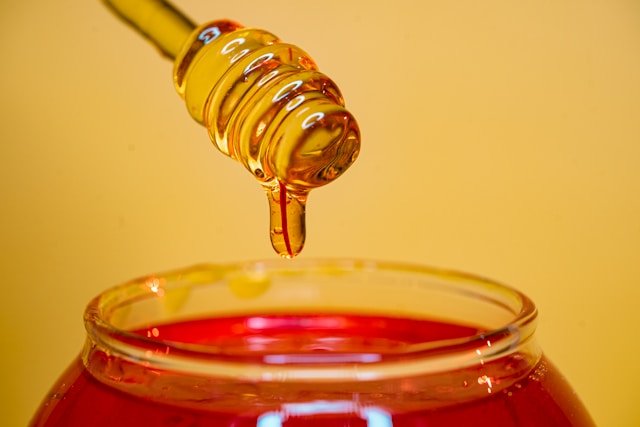
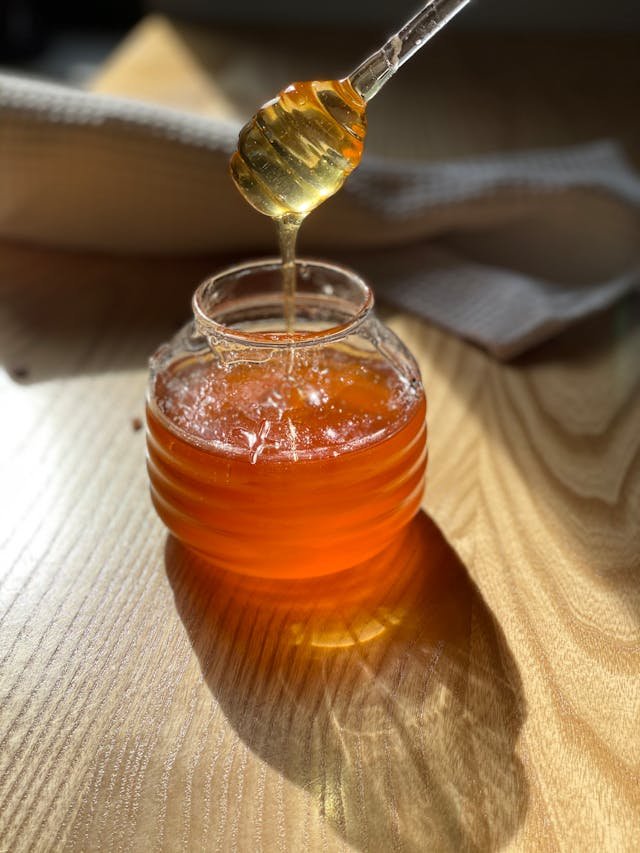
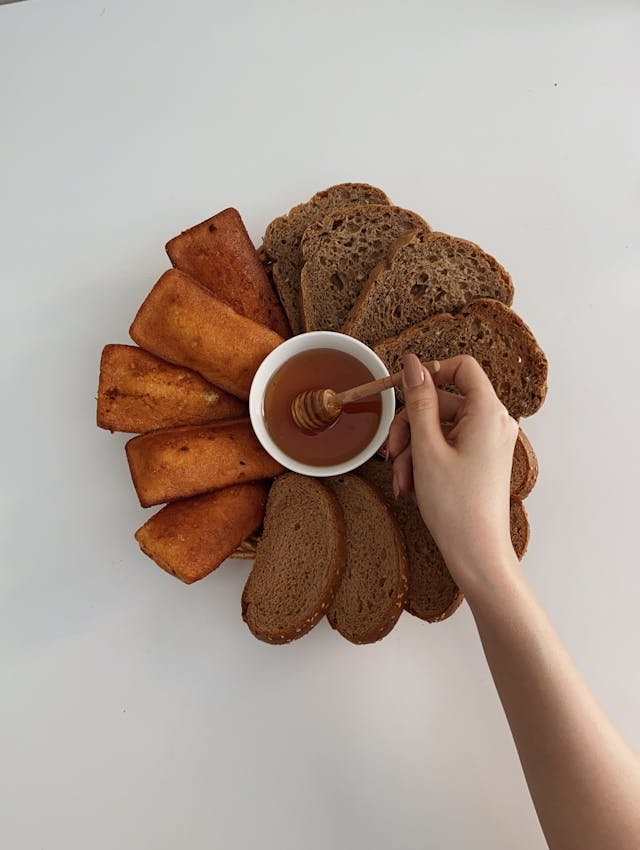
Pingback: Cranberry Almond Honey Cookies: Bursting with Flavor - Honey Cookie Recipes
Pingback: Honey Cranberry Cookies Recipe - Honey Cookie Recipes